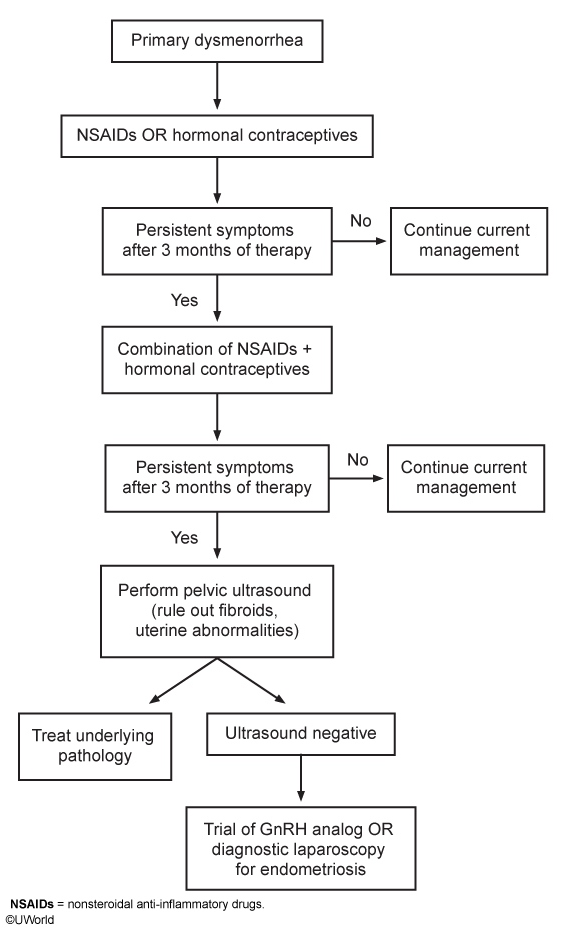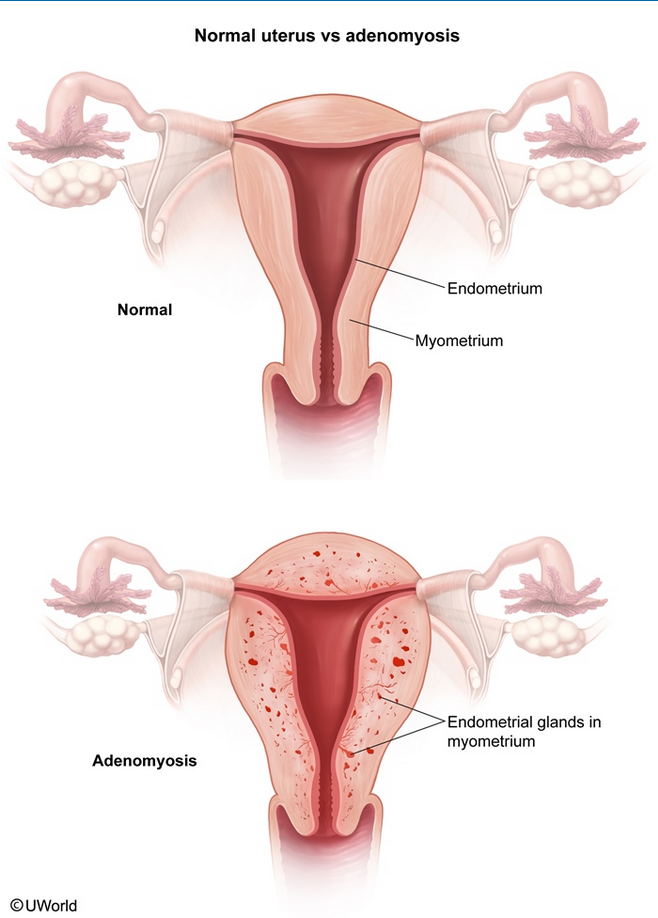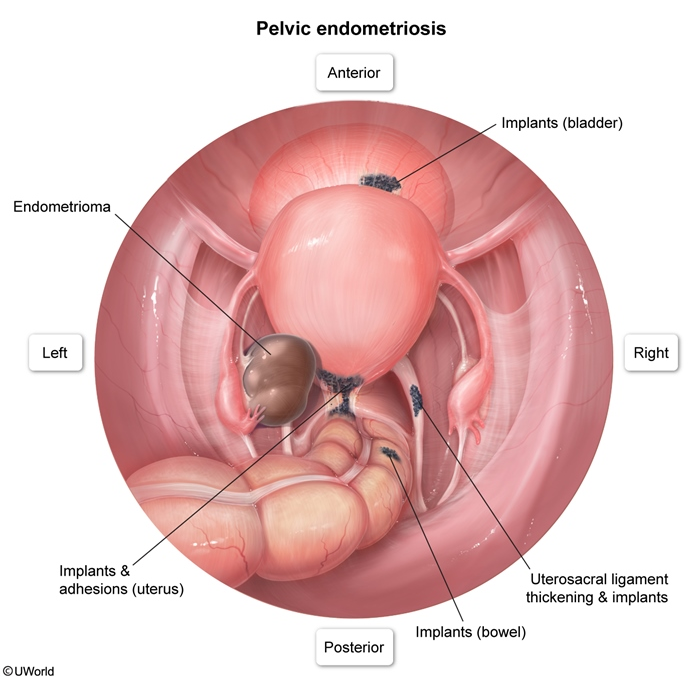primary dysmenorrhea
- related: OBGYN
- tags: #obgyn

Primary dysmenorrhea is painful menses (eg, cramping) due excessive prostaglandin production (eg, inflammation) that interferes with daily activities. In addition to cramping, patients often have associated fatigue, headache, and nausea. These symptoms typically begin just prior to the onset of menstruation and generally last 2-3 days. Primary dysmenorrhea is a clinical diagnosis based on cyclic pelvic pain (eg, menses) and a normal pelvic examination (eg, no fixed uterus or adnexal mass), suggesting no underlying pathology. These patients can be started on empiric treatment with combination oral contraceptives (OCPs) or nonsteroidal anti-inflammatory drugs (NSAIDs).
Patients with persistent symptoms despite 3 months of either NSAIDs or OCPs are started on a dual regimen. Patients with continued pain after 3 months of dual therapy require evaluation with a pelvic ultrasound to assess for secondary causes of pain (eg, adenomyosis) (Choice E). A negative ultrasound is suggestive of endometriosis, which can be confirmed via diagnostic laparoscopy or treated empirically with a GnRH agonist (eg, leuprolide) (Choices B and C).


(Choice D) Medroxyprogesterone acetate is indicated for management of patients with primary dysmenorrhea who also have a contraindication to OCPs (eg, migraines with auras, hypertension, age >35 with tobacco use). However, side effects such as weight gain limit this medication's usefulness.